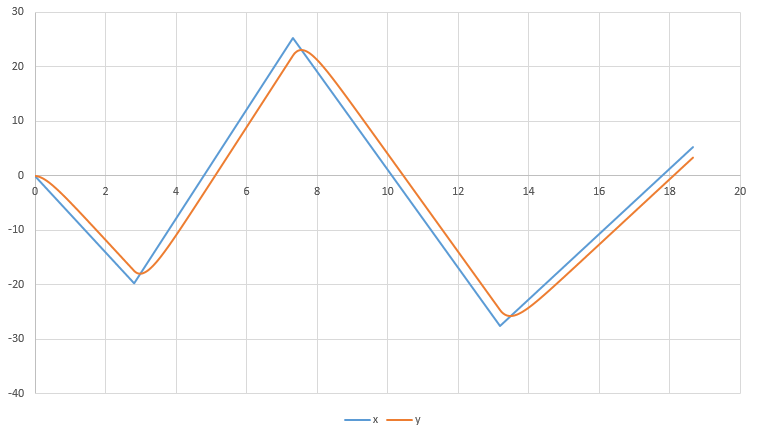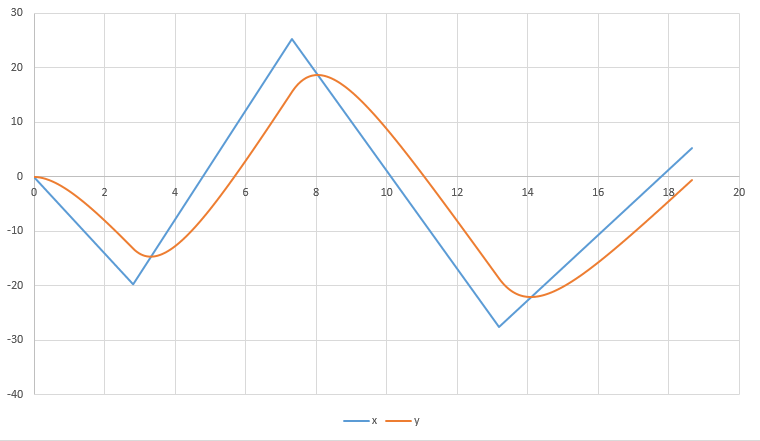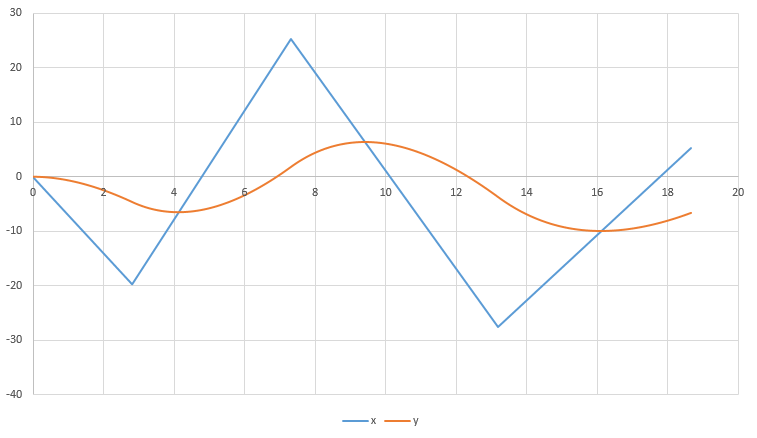Generating Smooth Curves Using Simple Digital Filters
Suppose we have a function of a variable , , which consists of multiple connected line segments.

What if we wanted to make a version of this curve with the jagged edges smoothed out? This is fairly easy to do using a digital filter. Define the smoothed function, , in the following way.
If we discretize , the subscript denotes the present iteration, and the subscript denotes the previous iteration. The equation above is known as an "infinite impulse response" (IIR) filter, because the present filter output is a function of the previous output, and so on, and so on.....The filter will take infinitely many iterations to fully catch up to any step change in the input.
The present value of ( the smoothed version of ), is equal to a weighted sum of the previous value of and the present value of . Thus, by tweaking the value of the "inertia constant" , we can dictate how fast the value of can change, and thus, how much smoothing we get.
As an extreme case, suppose . This would mean that would be frozen at a static value forever (infinite inertia). For , the smoothed and un-smoothed curves are exactly equal, corresponding to zero inertia.
Some graphs for intermediate values of are shown below. The third one is particularly reminiscent of the Fourier series. We could create a saw-tooth wave by summing up sine waves with various frequencies (from low to high). By increasing the inertia, we essentially implement a low-pass filter which removes the higher harmonics from the saw-tooth, revealing lower-frequency sinusoids.



Easy Math Editor
This discussion board is a place to discuss our Daily Challenges and the math and science related to those challenges. Explanations are more than just a solution — they should explain the steps and thinking strategies that you used to obtain the solution. Comments should further the discussion of math and science.
When posting on Brilliant:
*italics*or_italics_**bold**or__bold__paragraph 1
paragraph 2
[example link](https://brilliant.org)> This is a quote# I indented these lines # 4 spaces, and now they show # up as a code block. print "hello world"\(...\)or\[...\]to ensure proper formatting.2 \times 32^{34}a_{i-1}\frac{2}{3}\sqrt{2}\sum_{i=1}^3\sin \theta\boxed{123}Comments
There are no comments in this discussion.